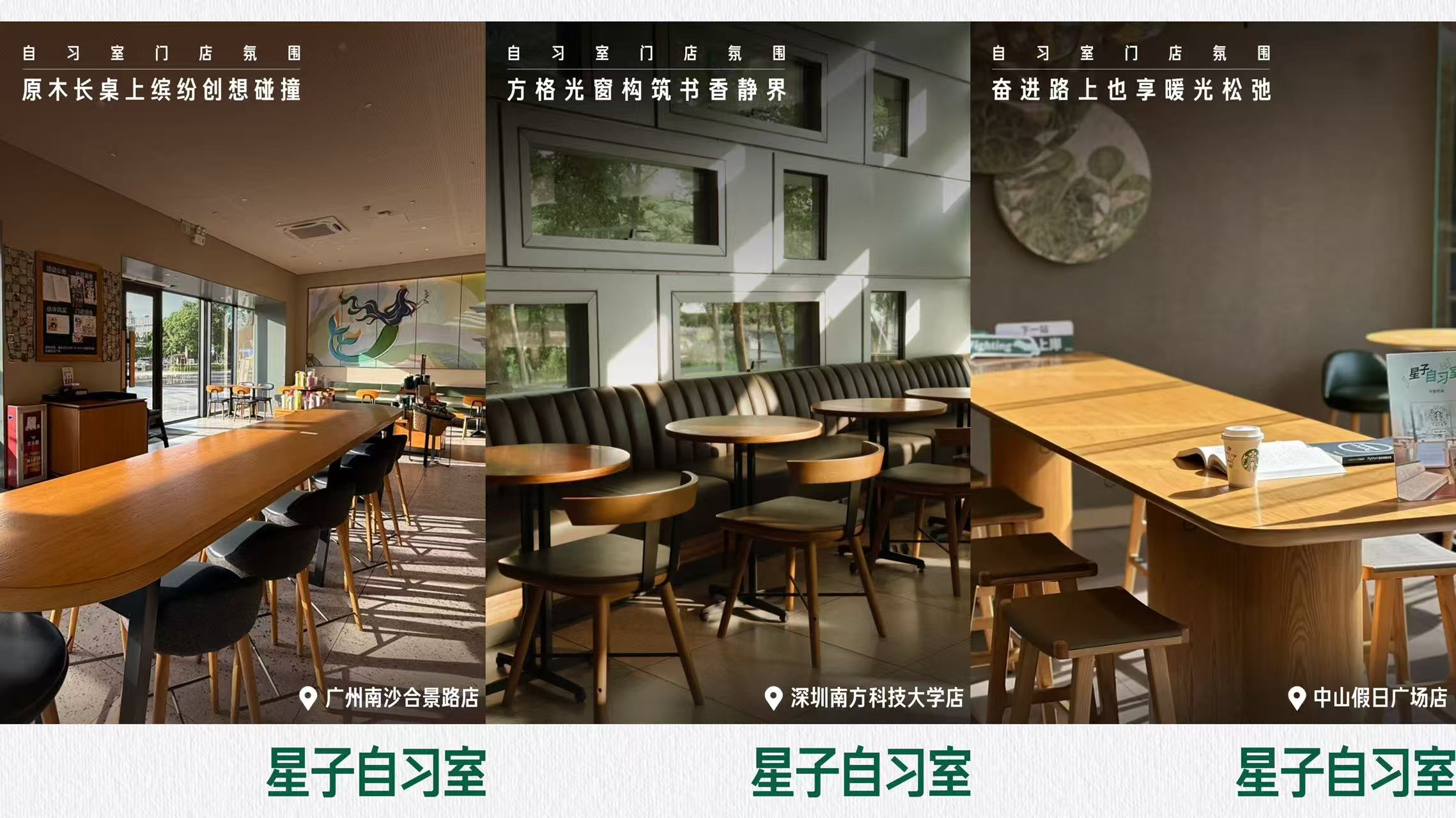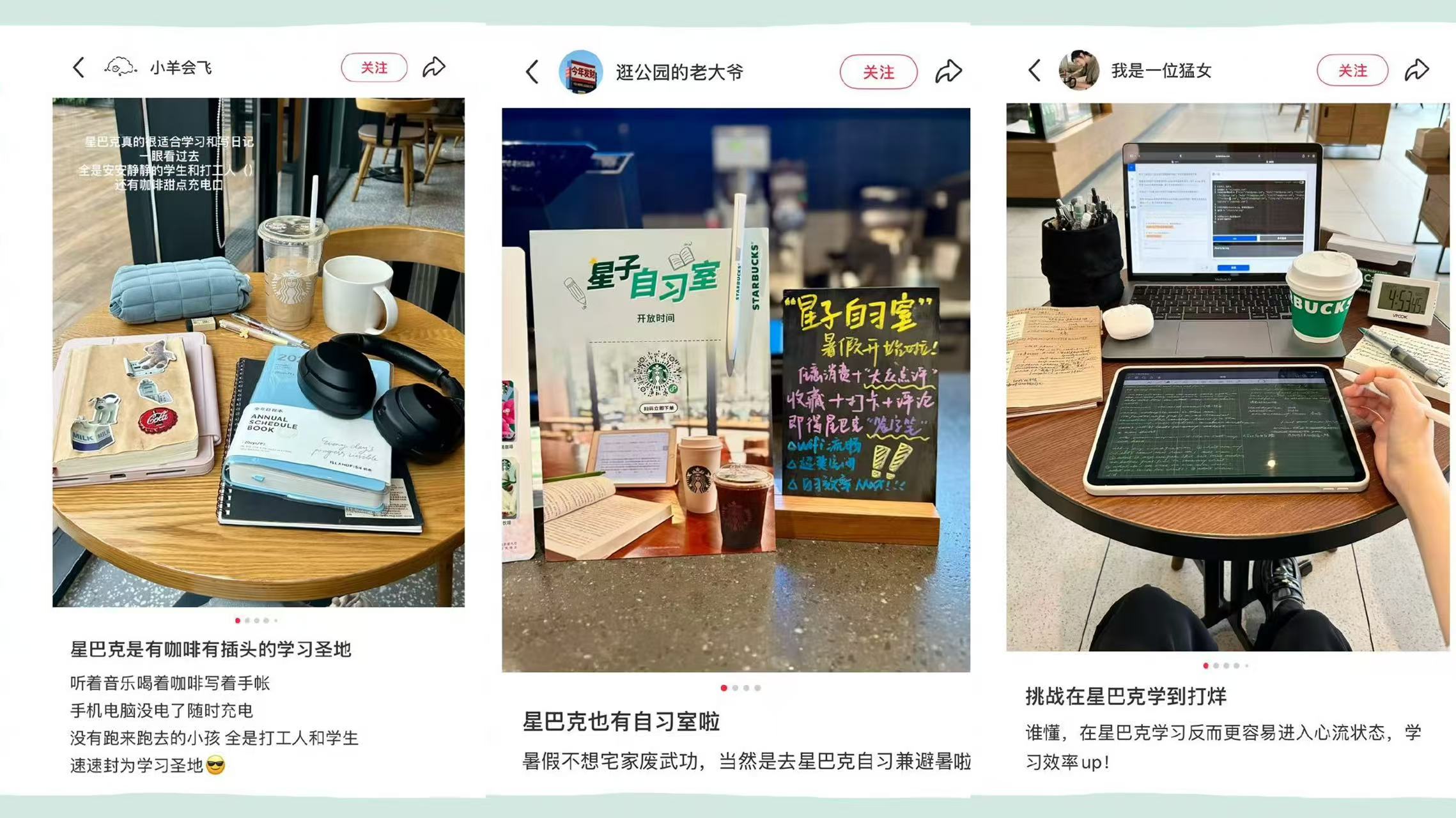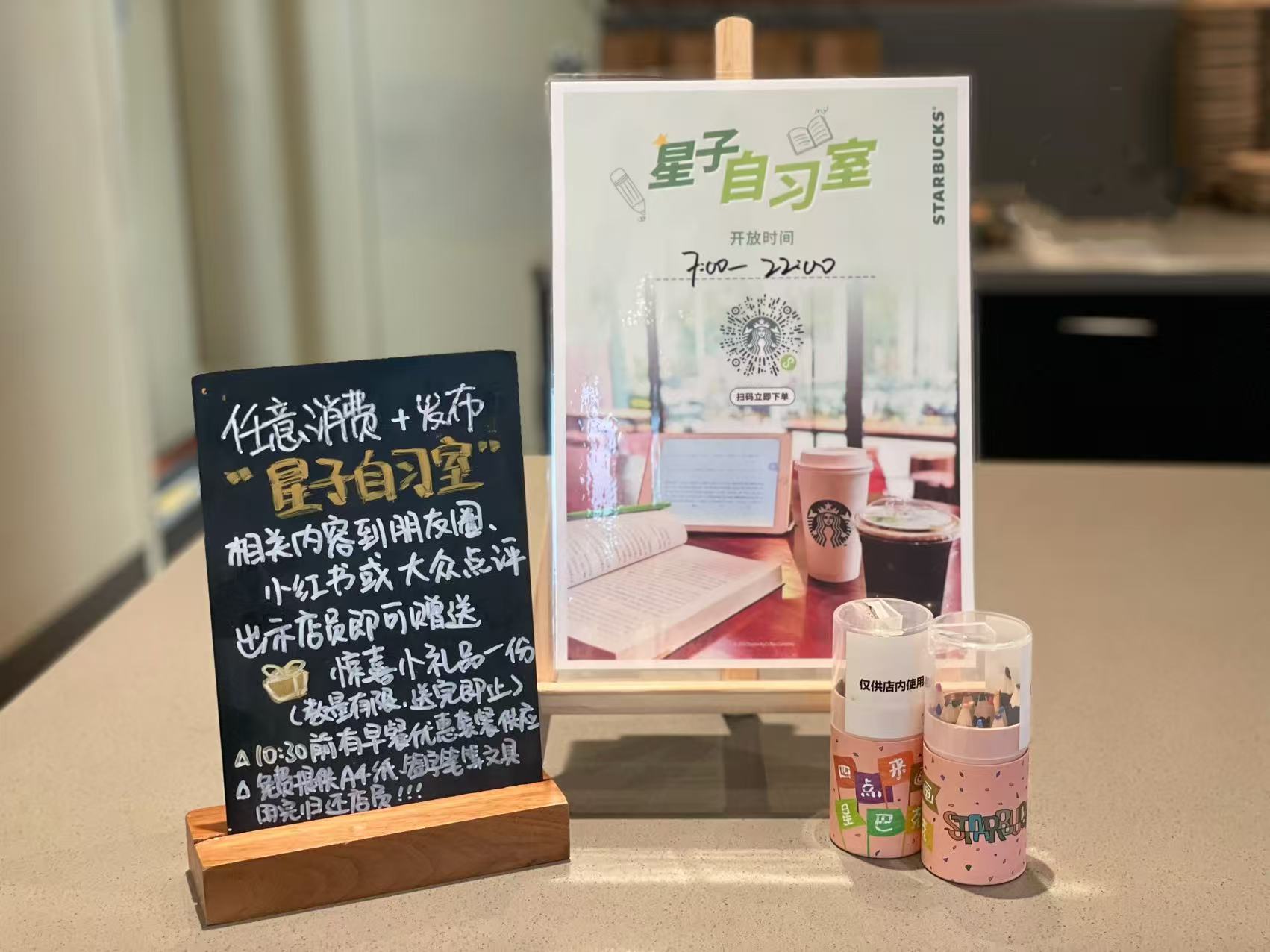Late afternoon in Starbucks, the sun slants through the floor‑to‑ceiling windows of the coffeehouse facing a busy street.
The long table is occupied.
Students are bent over laptops, remote workers are camped out with AirPods in, and a few freeloaders are sipping free warm water with the confidence of regulars.
This is the new normal at Starbucks’ Star Study Room (星子自习室)—a new feature quietly rolled out in select stores across Guangzhou, Shenzhen, Zhongshan, and Dongguan.
It’s part study hall, part community experiment, and completely free.

Star Study Room at Guangzhou, Shenzhen & Zhongshan Starbucks, Image via Starbucks Guangzhou Weibo
The setup is simple but surprisingly thoughtful:
Long shared tables with charging outlets and Wi-Fi
Free warm water if coffee isn’t your thing
No time limit and no purchase required
Some outlets even set up a 'Book Sharing Corner,' inviting guests to exchange their books and linger longer, a small step towards creating a more engaging in-store community.
And during the promotion phase, if you share your study vibe on social media, you might even walk away with a Starbucks pen—an Instagrammable token for your productivity.

User Generated Posts on Social Media, Image via Starbucks China Weibo
Why Starbucks is Doubling Down on Space
This initiative is more than a local experiment.
It’s part of Starbucks’ global strategy: 'Back to Starbucks,' a push to return to its roots as a community-oriented coffeehouse.
Around the world, the brand is simplifying menus, retraining baristas, and leaning into the third space concept: a place that’s not home, not work, but where you want to linger.
In China, that idea is getting a Gen Z upgrade.
Urban life offers few quiet public spaces, and most budget coffee shops prioritize takeout and speed over atmosphere.
Starbucks sees an opportunity to win loyalty by giving people time and space, just as effectively as caffeine.
But Can it Brew a Comeback?
Starbucks’ China business has been under pressure in recent years.
Early 2025 saw flat same-store sales, as Luckin and Cotti Coffee kept luring price-sensitive crowds with rock-bottom deals and relentless app promotions.
The latest quarter finally showed a modest rebound, with traffic up and same‑store sales edging into positive territory.
Uncertainty still looms.
The coffee market in China is as ferocious as ever, with budget chains and bubble tea brands competing for every yuan and every lunch break.
The study room approach is a measured gamble:
It reinforces premium branding and emotional loyalty
It costs little to implement, using existing seating as an experiential feature
But it won’t drive paid volume overnight, and free seating might test patience during peak hours
Still, for young urbanites who value comfort, routine, and a touch of lifestyle theater, the Starbucks third space 2.0 could be a refreshing alternative to China’s ongoing coffee price war.
For now, if you’re in Guangzhou or Shenzhen, grab your laptop, enjoy some free warm water, and maybe earn that pen by sharing the vibe online—you might just be living the next chapter of Starbucks’ third-space story.
Let us know your comments or experiences with the Star Study Room
[Cover image by Rachel Wu/That's]





















0 User Comments